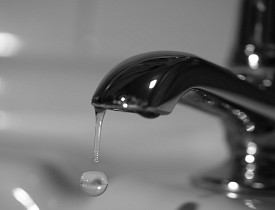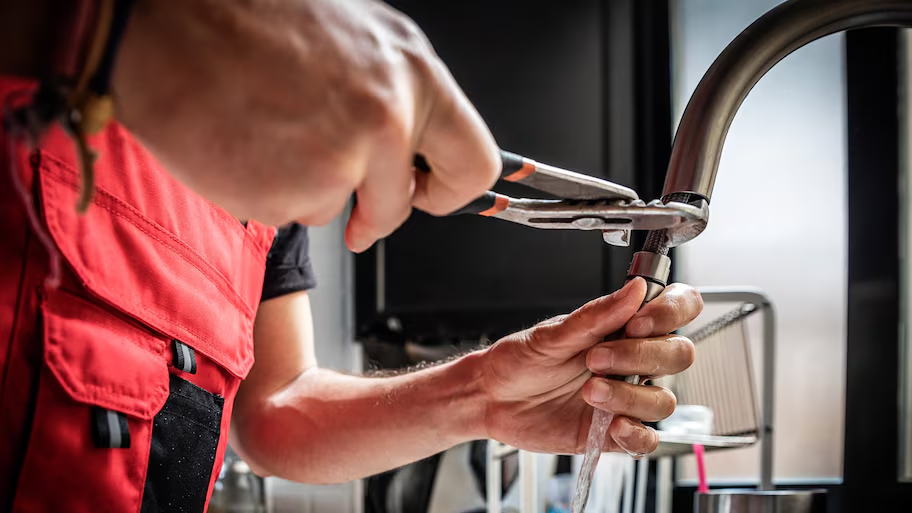Motives Why It's Important to Mend a Dripping Faucet
Motives Why It's Important to Mend a Dripping Faucet
Blog Article
We have encountered this article relating to Why Are My Faucets Dripping (And Can I Fix It Myself)? down the page on the internet and accepted it made good sense to quickly share it with you on this site.

Leaking taps could appear like a small inconvenience, yet their influence goes beyond simply the inconvenience of the sound. From drainage to incurring unneeded monetary prices and wellness threats, neglecting a trickling faucet can bring about numerous effects. In this write-up, we'll explore why it's vital to resolve this usual house issue without delay and effectively.
Wastage of Water
Environmental Effect
Trickling faucets contribute substantially to water wastefulness. According to the Environmental Protection Agency (EPA), a solitary faucet dripping at one drip per secondly can lose greater than 3,000 gallons of water each year. This not just pressures water resources yet also affects environments and wild animals based on them.
Step-by-Step Guide to Repairing a Dripping Tap
Tools Needed
Prior to trying to deal with a trickling faucet, collect the needed tools, including a flexible wrench, screwdrivers, substitute components (such as washers or cartridges), and plumber's tape.
Common Faucet Issues and Their Solutions
Determine the sort of faucet and the certain problem causing the drip. Common problems consist of worn-out washers, rusty valve seats, or malfunctioning O-rings. Describe maker guidelines or on the internet tutorials for step-by-step assistance on fixings.
Financial Costs
Increased Water Expenses
Past the environmental influence, dripping faucets can pump up water costs significantly. The gathered wastefulness over time equates right into greater utility expenditures, which can have been stayed clear of with prompt repair services.
Potential Residential Or Commercial Property Damage
In addition, long term trickling can result in damage to fixtures and surface areas surrounding the tap. Water accumulation can create discoloration, rust, and also architectural issues if left neglected, leading to additional repair prices.
Wellness Concerns
Mold and Mildew Development
The continuous existence of wetness from a dripping tap creates an excellent atmosphere for mold and mildew and mildew development. These fungis not only jeopardize indoor air top quality but additionally present wellness threats, specifically for people with respiratory conditions or allergies.
Waterborne Diseases
Stationary water in leaking faucets can end up being a breeding ground for germs and other microorganisms, enhancing the danger of waterborne diseases. Pollutants such as Legionella germs prosper in stationary water, potentially resulting in serious diseases when ingested or inhaled.
Do it yourself vs. Specialist Repair service
Pros and Cons of Do It Yourself Repair Work
While some might try to deal with a leaking tap themselves, DIY fixings come with their very own collection of challenges. Without correct expertise and devices, do it yourself efforts can aggravate the issue or lead to incomplete repair services, prolonging the trouble.
Benefits of Hiring an Expert Plumber
Hiring a professional plumber makes certain that the underlying reason for the leaking faucet is dealt with successfully. Plumbers possess the knowledge and equipment to diagnose and repair tap concerns efficiently, saving time and lessening the risk of additional damages.
Ecological Obligation
Private Contribution to Conservation
Taking responsibility for taking care of trickling faucets straightens with broader initiatives towards water preservation and ecological sustainability. Every person's actions collectively make a considerable impact on maintaining priceless resources.
Lasting Living Practices
By focusing on prompt repairs and adopting water-saving routines, people add to sustainable living techniques that profit both present and future generations.
Safety nets
Normal Upkeep Tips
To stop leaking taps, do regular upkeep such as cleaning aerators, checking for leakages, and changing damaged parts quickly. Furthermore, think about mounting water-saving gadgets or upgrading to extra effective components.
Relevance of Prompt Repairs
Attending to dripping taps as soon as they're noticed avoids additional water waste and prospective damages, inevitably saving both water and money in the future.
Influence On Residential Or Commercial Property Value
Understanding of Well-Maintained Home
Keeping a residential property in good condition, including resolving maintenance issues like dripping faucets, boosts its viewed worth and worth among possible purchasers or lessees.
Influence on Resale Value
Residences with well-kept plumbing components, consisting of taps, command higher resale values in the realty market. Attending to trickling taps can add to a positive impression during property assessments and settlements.
Verdict
Resolving a trickling faucet goes beyond mere comfort; it's a vital action towards preserving water, lowering financial expenses, and securing health and property. Whether via do it yourself repairs or professional assistance, doing something about it to deal with leaking taps is a little yet impactful method to promote liable stewardship of sources and contribute to a healthier, extra lasting future.
How to Fix a Leaky Faucet: Step-by-Step Repair Guide
A leaky faucet may seem like a simple annoyance, but if it's not fixed promptly, that leak could cost hundreds to potentially thousands. From water damage to mold, mildew, and high water bills, even a tiny leak can be catastrophic if left unattended. Damage like this can even affect the overall value of your home, so it's important to take the right approach for leaky faucet repair. You may need the help of a plumber in some cases, but we've got a few tips you can try on how to fix a leaky faucet before calling the pros.
Four Faucet Types
When you're learning how to fix a leaky faucet, the first step is knowing what kind of faucet you're working with! There are four common types.
Cartridge Faucets
Cartridge faucets come in one- or two-handled varieties. In one-handled cartridge faucets, hot and cold water combines in a single cartridge. In the two-handled versions, hot and cold water are controlled separately and mixed in the faucet.
Ball Faucets
Ball faucets have a single lever you push up and down to adjust the pressure and rotate to change the temperature. A slotted metal ball controls the amount of water allowed into the spout.
Compression Washer Faucets
They're the oldest type of faucet, but they're still used in many homes — especially older ones. Compression faucets have two separate handles that, when turned, raise or lower the washer that seals a water valve. This valve stops water from flowing through the faucet when it is turned off.
Disc Faucets
Disc faucets rarely need to be repaired due to their maintenance-free design. The water flow is controlled by two discs — the upper one raises and lowers against a fixed lower disc, creating a watertight seal. If your disc faucet starts leaking, you may need to replace the seals or clean residue buildup from the inlets.
Fixing a Leaky Faucet
Step 1: Turn Off the Water
Whether you're learning how to fix a leaky bathtub faucet or how to fix a leaky kitchen faucet, always turn off the water supply to your working area when you're fixing a leak. The last thing you want is a flood added to your list of things to fix.
Look for the shutoff valves below your sink or around the tub and turn them clockwise to stop the water flow. If your faucet doesn't have shutoff valves, you may need to turn off the water for the whole house. Check to make sure it's off by turning the faucet on. If nothing comes out, you're ready to start the repair.
Step 2: Take Apart the Faucet
How you disassemble your faucet depends on the type of fixture you have. You can use a flathead screwdriver to remove the caps on top of the handle or handles for cartridge and compression faucets. Inside, you should see handle screws. Unscrew these with a screwdriver to remove the handle.
Disc- and ball-style faucets will typically have an inlet screw near the handle, and removing that will reveal the interior of the faucet.
Detach the Valve Stem
For cartridge- and compression-style faucets, you'll see the inner valve stem or cartridge once you remove the faucet handles. If you have a compression faucet, unscrew the brass valve stem. If you have a cartridge faucet, pull out the cartridge. If your cartridge has been in place for a while, it may require some tools or extra force to remove it due to mineral deposits.
Examine and Replace Parts
Once you've removed the parts, check them out to confirm what needs to be replaced. You may see corroded rubber washers, O-rings, stems, or cartridges. On a ball-style faucet, check the seats and springs for damage.
If you need to repair a leaky disc faucet, check the inlet and seals on the lower disc.
Once you determine what parts must be replaced, visit your local hardware store. Bring the damaged parts with you to ensure you can purchase the correct components to replace them.
Clean Valves and Faucet Cavity
If you've removed a stem or cartridge, you may notice mineral buildup in the faucet's threads. Use white vinegar to clean the valve seat by soaking it for a few minutes, then scrub it away with a soft toothbrush and rinse with warm water. You can also clean the interior of the faucet in the same way.
Reassemble the Faucet
Once your faucet is cleaned and the required parts have been replaced, it's time to reassemble it. Put the pieces back together and slowly turn the water supply back on. Doing this slowly is crucial because too much initial water pressure can damage the new hardware you've just installed.
https://homewarranty.firstam.com/blog/how-to-fix-leaky-faucet

I am very enthusiastic about Why Is It Important To Fix Your Leaking Tap/Faucet? and I'm hoping you enjoyed our blog entry. I beg you take the time to share this write-up if you liked it. Thanks for being here. Please check our blog back soon.
Report this page